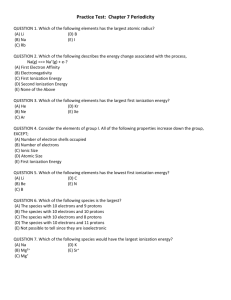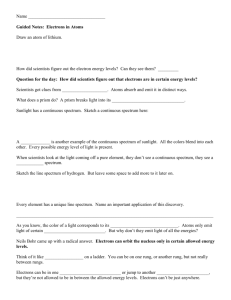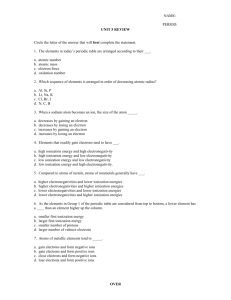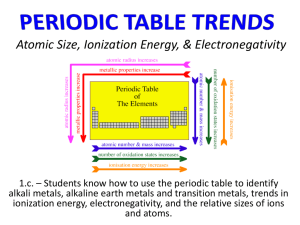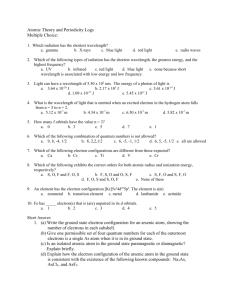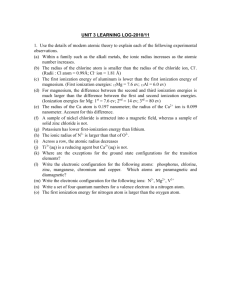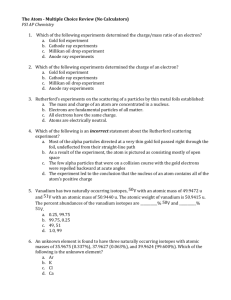Activity6Lab - Newton.k12.ma.us
advertisement
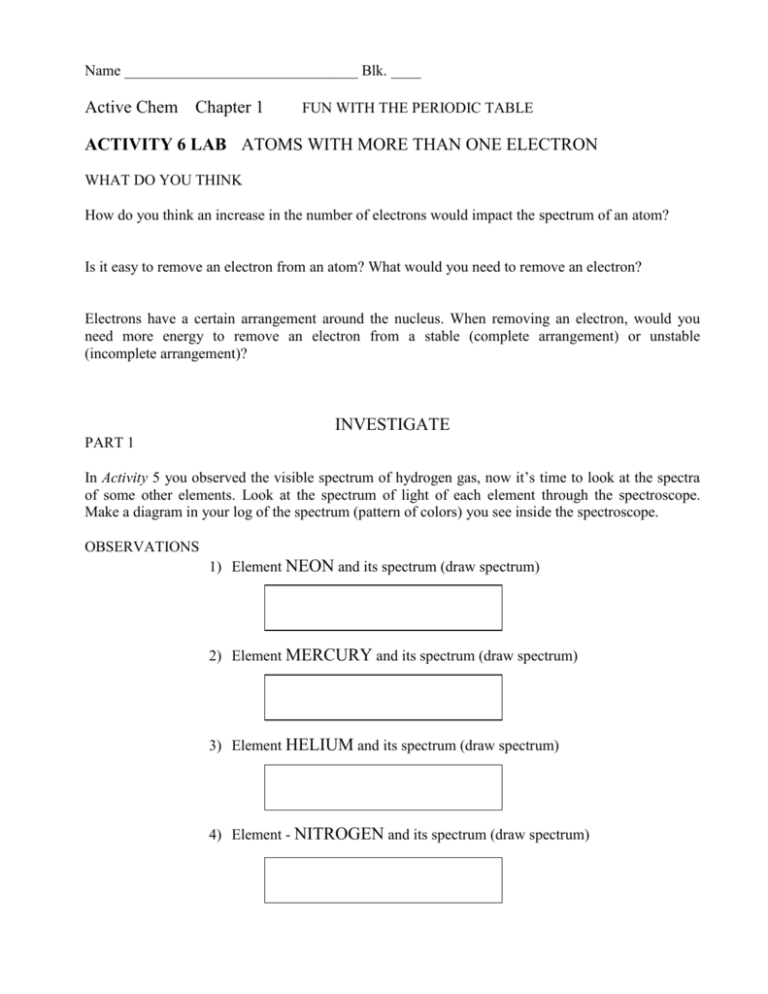
Name _______________________________ Blk. ____ Active Chem Chapter 1 FUN WITH THE PERIODIC TABLE ACTIVITY 6 LAB ATOMS WITH MORE THAN ONE ELECTRON WHAT DO YOU THINK How do you think an increase in the number of electrons would impact the spectrum of an atom? Is it easy to remove an electron from an atom? What would you need to remove an electron? Electrons have a certain arrangement around the nucleus. When removing an electron, would you need more energy to remove an electron from a stable (complete arrangement) or unstable (incomplete arrangement)? INVESTIGATE PART 1 In Activity 5 you observed the visible spectrum of hydrogen gas, now it’s time to look at the spectra of some other elements. Look at the spectrum of light of each element through the spectroscope. Make a diagram in your log of the spectrum (pattern of colors) you see inside the spectroscope. OBSERVATIONS 1) Element NEON and its spectrum (draw spectrum) 2) Element MERCURY and its spectrum (draw spectrum) 3) Element HELIUM and its spectrum (draw spectrum) 4) Element - NITROGEN and its spectrum (draw spectrum) Name _______________________________ Blk. ____ Active Chem Chapter 1 FUN WITH THE PERIODIC TABLE ACTIVITY 6 LAB ATOMS WITH MORE THAN ONE ELECTRON INVESTIGATE PART 2 I Open your book on page 47. There is a chart that shows first and second ionization energies of 36 elements on the Periodic Table. Define first and second ionization energies. FIRST IONIZATION ENERGY SECOND IONIZATION ENERGY Look at the graph of the ionization energies (provided by your teacher) and answer the following questions: 1. What kinds of patterns do you see? 2. Where are the ionization energies the largest? The smallest? 3. What happens to the ionization energies as the atomic number increases? 4. Group the elements by their ionization energies into four consecutive “periods”. List the range of atomic numbers in each group. Period 1 Period 2 Period 3 Period 4 5. Are there any interruptions in the general trend of ionization energies as the atomic number increases in a “period”? If so, describe it. II Talking about the peaks you see…, draw a vertical line with a ruler from the peak to the element on the X-axis, put a green circle around the peaks Remember, you are looking for elements that have larger ionization energies than their neighbors. In reality, you are looking for peaks in your graph, not just those elements with higher values. STABLE ARRANGEMENT INDICATES HIGH PEAKS 1. Which element in the first period (atomic numbers 1 and 2) has the most stable arrangements of electrons in its atoms? 2. Which elements in the second period (atomic numbers 3 through 10) of the periodic table have the most stable arrangements of electrons in their atoms? 3. Which elements in the third period (atomic numbers 11 through 18) of the periodic table have the most stable arrangements of electrons in their atoms? 4. Which elements in the fourth period (atomic numbers 19 through 36) of the periodic table have the most stable arrangements of electrons in their atoms?

